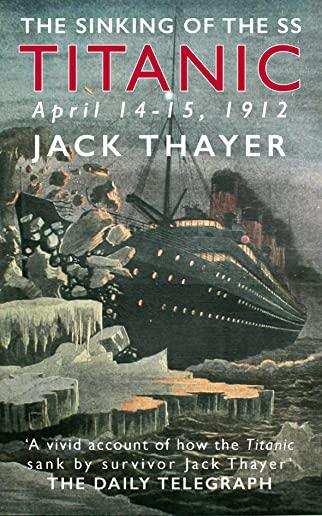
description
6'A vivid account of how the TITANIC sank by survivor Jack Thayer' THE DAILY TELEGRAPH. 'A dramatic first-hand account... TITANIC survivor reveals the horrifying cries of the luxury liner's dying victims' THE DAILY MAIL. On April 14, 1912, John B. 'Jack' Thayer III the 17-year-old heir to a Pennsylvania railroad fortune, was riding in first class with his mother, father and their maid on the most spectacular ship of its era - the TITANIC. Jack was one of only a handful of survivors who escaped by jumping into the freezing Atlantic as the TITANIC sank and spent the next five hours clinging onto the last lifeboat that was swept off the ship's boat deck upturned. He barely survived the disaster, and his detailed and shocking account of that fateful night has riveted those he recounted it to in the following decades. Finally, in 1940, he wrote down what happened, printing 500 copies for his family. Five years later, after the tragic loss of his son in the Second World War, Jack Thayer committed suicide, and his story was mostly forgotten. This new edition published in 2018 includes the historically important series of six drawings by Lewis Skidmore a young art teacher aboard the CARPATHIA (which saved the TITANIC survivors). Jack described to Lewis the stages of the TITANIC'S demise, which Skidmore drew. Critically it shows the ship breaking in two as she sank. Many survivors refuted this assessment but seventy years later Jack and others was proved right when the wreck was discovered resting on the seabed in two halves. It also includes other bonus material, Jack's earlier, much shorter accounts of his amazing escape published in 1912 and 1913.ABOUT THE AUTHOR John 'Jack' B. Thayer III, was born in Philadelphia on 24 December 1894 into the wealthy and aristocratic Thayer family. His father was John Thayer II who ran the Pennsylvania Railroad Company, his mother, socialite Marian Thayer. After surviving the disaster he graduated from the University of Pennsylvania, served as an artillery officer in the First World War, went into banking and was later financial vice president of the University of Pennsylvania. He committed suicide on September 20, 1945 following several years of depression, he was found in a car in Philadelphia his throat and wrists cut. He was survived by his wife Lois Cassatt, son John, and three daughters, Lois, Julie and Pauline.
member goods
No member items were found under this heading.
Return Policy
All sales are final
Shipping
No special shipping considerations available.
Shipping fees determined at checkout.







